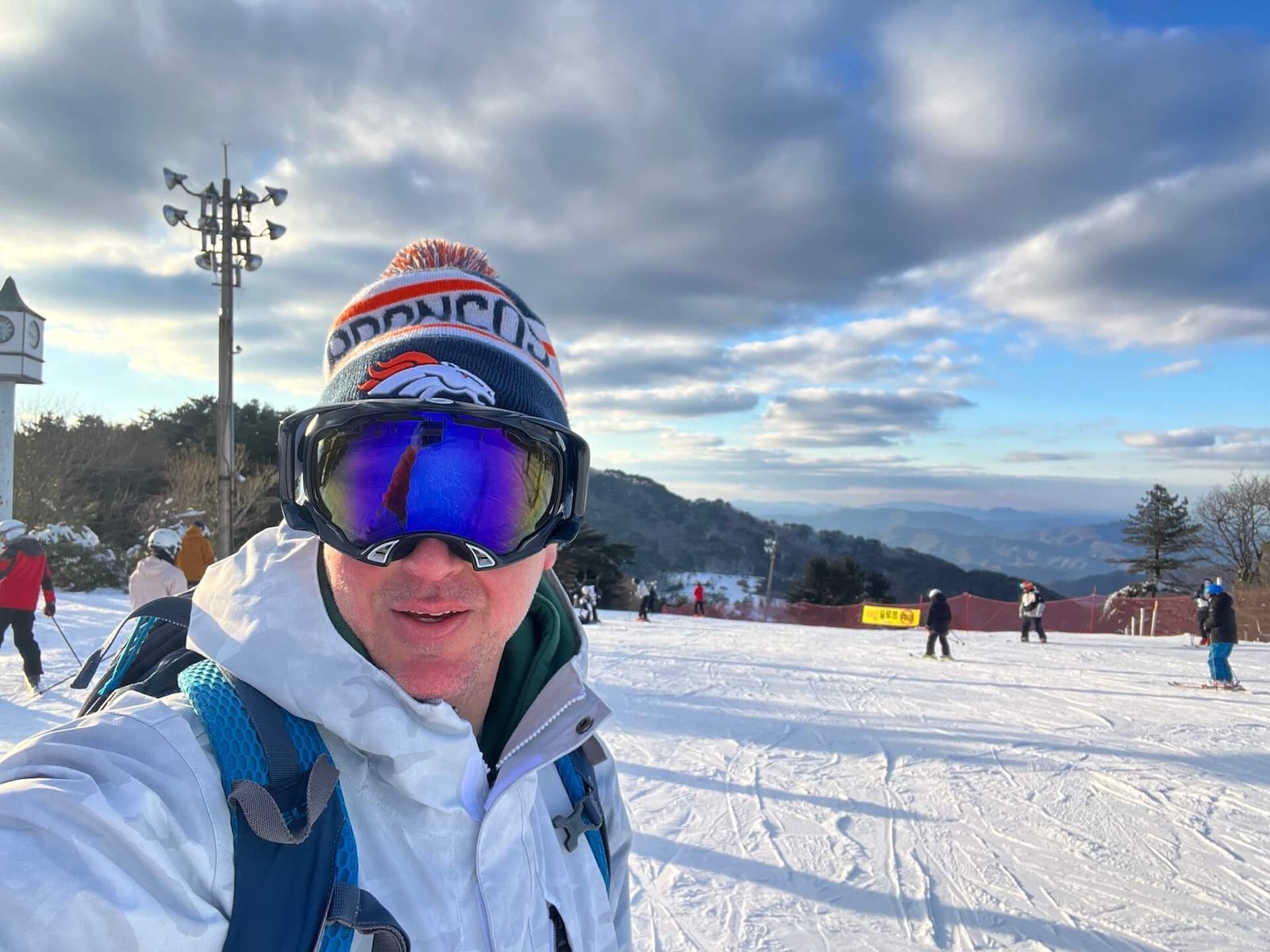Looking for places to ski in Asia in 2026 that offer something different from Japan? This guide walks through lesser-known options such as Gulmarg, Jyrgalan, and Shymbulak, along with planning notes, rough costs, and the thought process behind choosing my next destination.
📝 Quick 2026 Update Before You Read
When I first wrote this post, I was deep in the weeds researching alternatives to Japan for my next big ski trip. Gulmarg in Kashmir, India was the first location to pique my interest and spark my imagination, although an attack in nearby Pahalgam pushed me into an indefinite holding pattern and sent me digging into other options across Central Asia.
What follows grew out of that stretch of research and recalibration. Things eventually stabilized enough that I felt comfortable moving forward, and I decided to return to my original plan.
👉 Here’s my full breakdown on why I ultimately committed to Gulmarg (despite the risks) for winter 2026 and what that plan looks like.
🎯 Why I Began Searching for a New Asia Ski Destination for 2026
After years of living in South Korea, Japan has always been the place I’d go when I wanted real powder skiing. I haven’t gone every winter, but each trip showed how quickly things were changing, especially on Hokkaido. By the end of my 2025 visit to Niseko and Rusutsu, I realized I was ready for something different.
That sent me down the rabbit hole of ski options across Asia. I wanted big terrain, fewer crowds, and a destination that still felt a little raw. That search pulled me toward spots I’d barely considered before: Kashmir, Kazakhstan, Kyrgyzstan, and China’s far northwest.
🇯🇵 Why I’m Looking Beyond Japan in 2026
Skiing in Japan is still one of the best winter experiences on the planet. The snow remains unbelievable, and that hasn’t changed. What has changed is everything around it. During my most recent trip to Hokkaido in 2025, it was clear how far things had shifted since my first visit years ago.
The secret is out, and the growing pains are real. Crowds are bigger, prices are higher, and the overall vibe feels closer to a busy weekend in Colorado than the quiet powder haven it used to be.
A few things stood out on this last trip:
- Dining now requires strategy.
Around Niseko, most restaurants book out days in advance, sometimes with hefty deposits. That was a shock compared to my earlier trips when I could walk in just about anywhere, even solo, and get an incredible meal at a reasonable price. My brother and his friend, who usually travel with bigger dining budgets than I do, were surprised too. If you don’t plan ahead, be ready to rely on Japan’s legendary convenience store food. - Lift lines are now a real factor.
Niseko was the biggest culprit, but Rusutsu isn’t immune either. I’m not talking Vail-on-a-weekend levels, but it’s moving in that direction. Even the backcountry gates had queues, something I never saw on my earlier trips. The whole scene made it clear that the “secret” is officially gone.
🎥 Watch: Backcountry gate line at Niseko in 2025
- Tourism is surging.
With Japan easing post-Covid entry rules, tourism rebounded hard. There’s talk of new visa requirements for some nationalities and even rumors of tiered pricing for foreign visitors, possibly including lift tickets. - Luxury is taking center stage.
Hanazono’s once-sleepy base now has a Park Hyatt, with rooms that start around $2,000 a night in peak season. The new heated six-pack chair and upgraded base area are impressive, but big-money builds tend to accelerate crowds and drive up prices. I can barely afford to visit my hometown of Vail anymore, and it feels like Niseko is headed in the same direction. - Niseko Village feels maxed out.
Rusutsu still has a more relaxed vibe, though even there, lift lines on powder days are becoming part of the routine. In Niseko, everything from transit and restaurant demand to ski bus bookings has scaled up. Add in the growing corporate ownership, and the laid-back feel from a decade ago is hard to find.
After three unforgettable ski trips to Japan and a good handle on what South Korea offers, I started wondering what else Asia might hold for skiers like me.
The answer? A whole rabbit hole of places I’d barely considered before: Kashmir, Kazakhstan, Kyrgyzstan, northern China.
Some of them will have to wait, but one thing was obvious. I was ready to look elsewhere for 2026.
🏔️ From Colorado to Korea, How I Ended Up Chasing Powder Across Asia
I grew up in Vail, where skiing wasn’t a hobby, it was my way of life. After college, I worked in ski PR and spent as much time in the Colorado backcountry as I did at my desk. It was a good setup for a while, but I eventually traded the PR grind for a year of travel, which took me through New Zealand, Australia, South America, and a long stretch living out of a backpack.
Somewhere in that year on the road, my priorities shifted. I still loved skiing, but curiosity and travel started steering the ship. By the time I landed in South Korea in 2007 to teach English, I realized I’d built a life that gave me the freedom to explore the region while still keeping skiing in the mix.
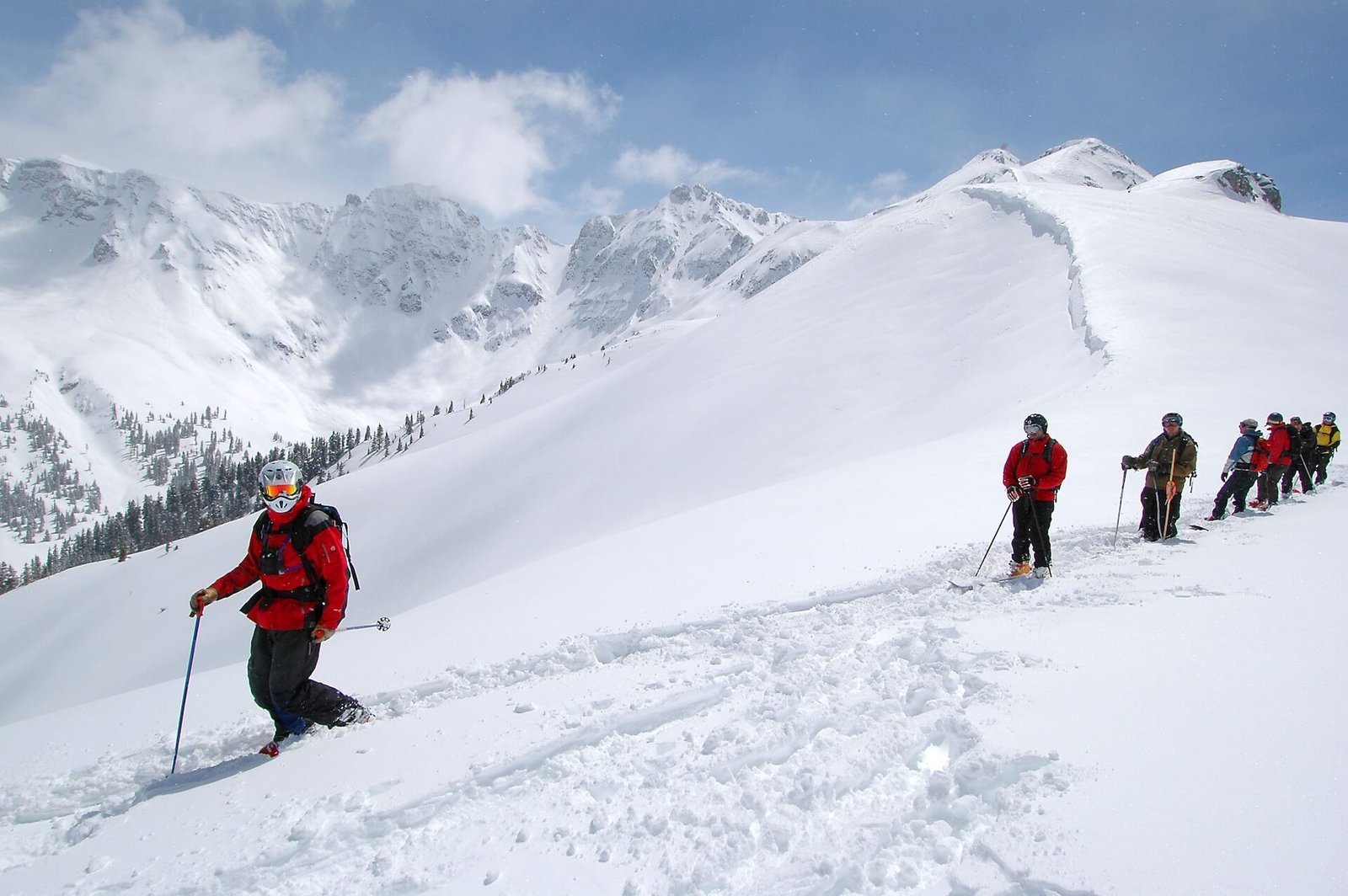
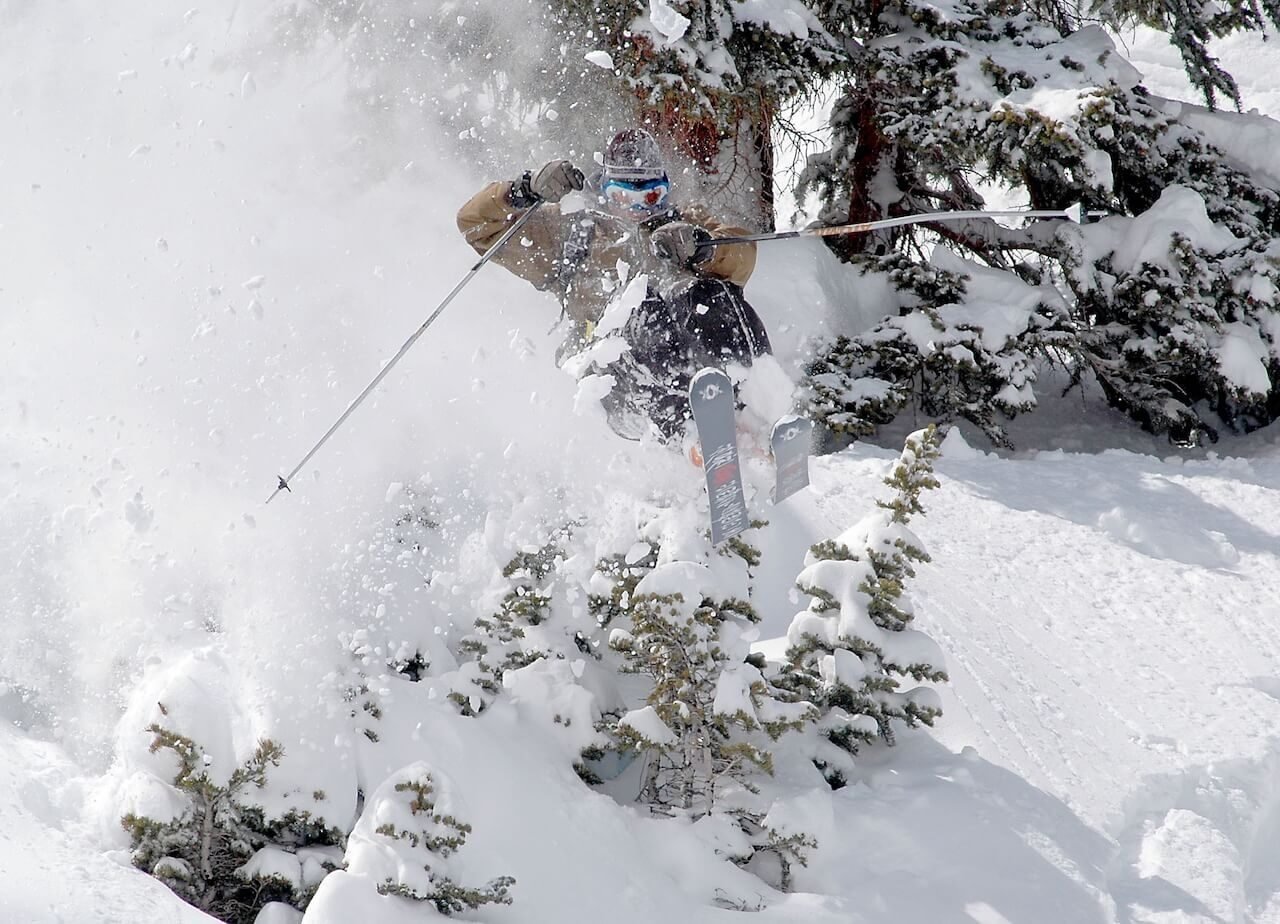
South Korea’s resorts became my winter standby. Places like Muju, High1, and Yongpyong scratched the itch well enough, and I’ve written guides to help others navigate them, but they were never the kind of terrain I used to chase back home. They’re fun, accessible, and perfect for days with friends, but not the trips you look back on a decade later.
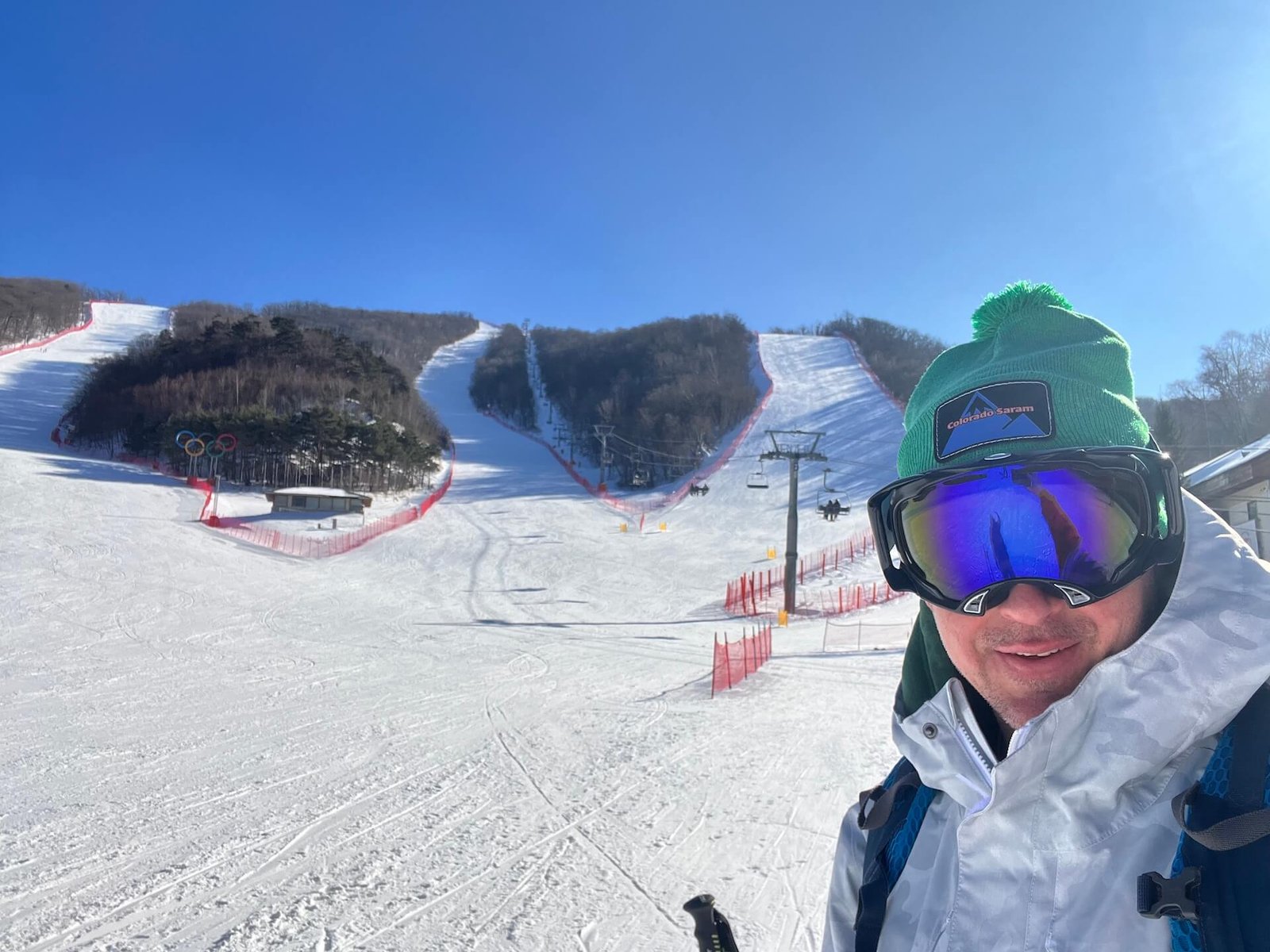
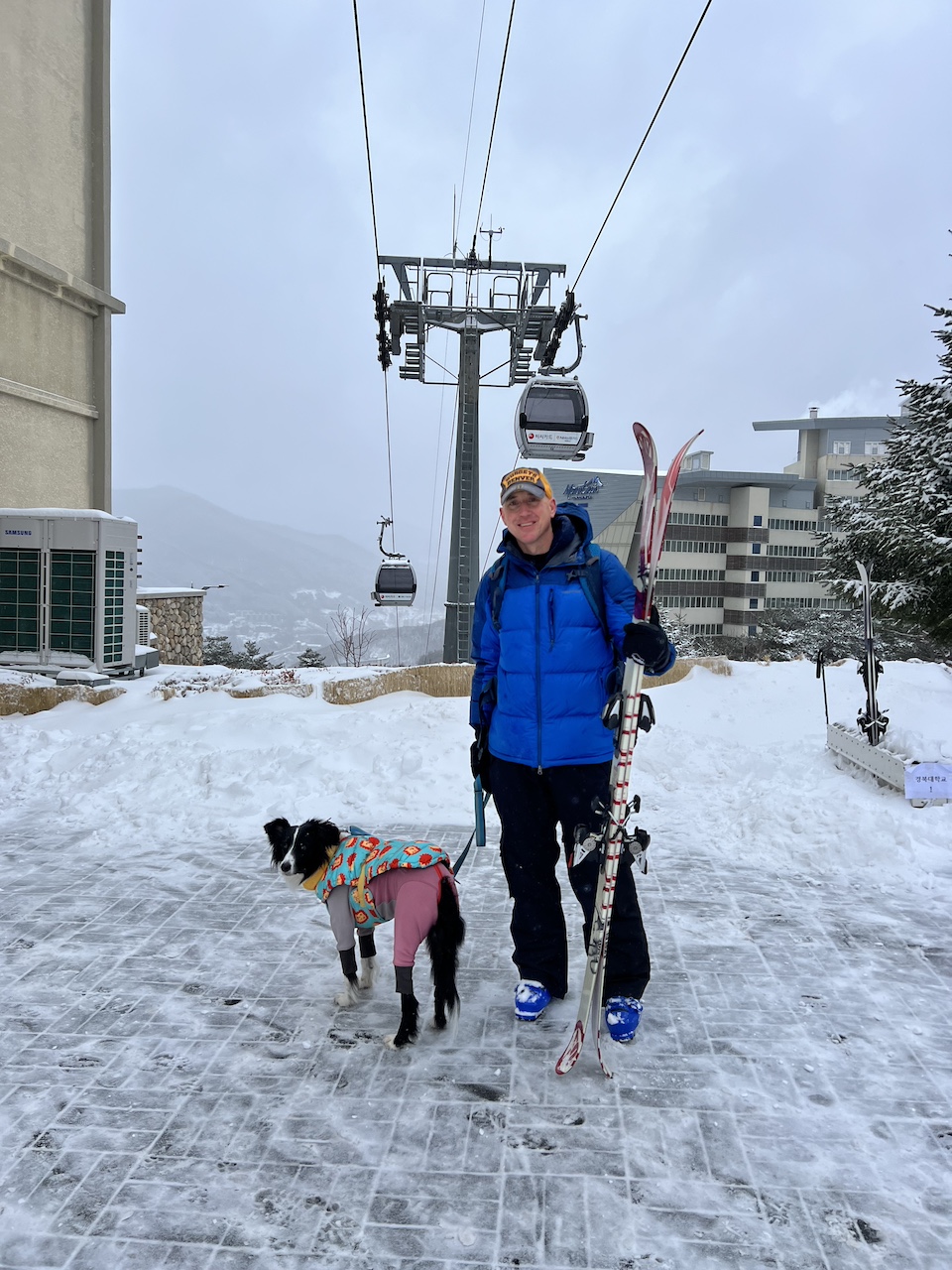
That’s why Japan became my go-to for deeper, more reliable snow. My first trip was Hakuba in 2008. My second, Niseko in 2014, was when I understood what Japow really meant. And by the time I returned in 2025 with my brother, I could see how much had changed.
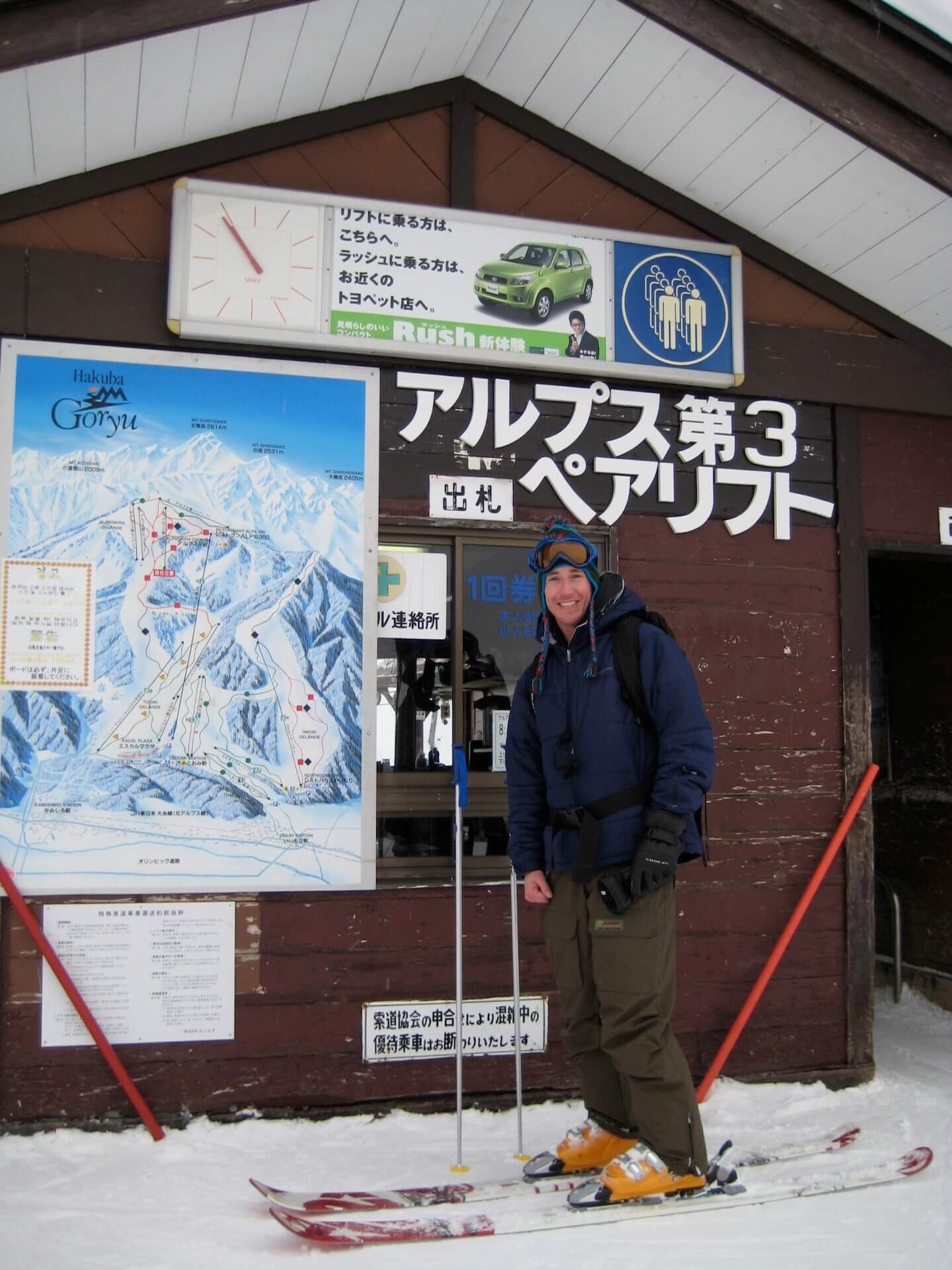
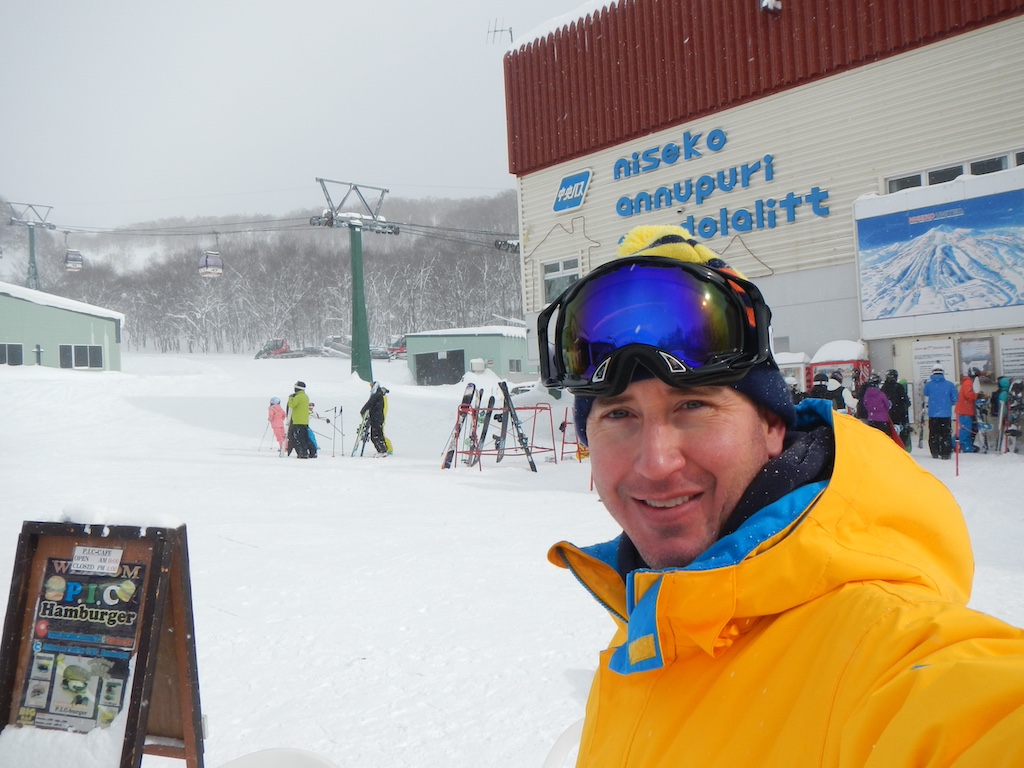
Those three trips gave me enough perspective to appreciate just how good Japan can be, and also how different it has become. So when I started digging into 2026, I wasn’t looking to repeat the same experience. I wanted a destination that felt a little less polished, a little more unpredictable, and a lot more remote.
👉 If you’re curious about what skiing in Japan looks like these days, I’ve started pulling all of my trips, notes, and comparison guides into one place on the site, which you can find here.
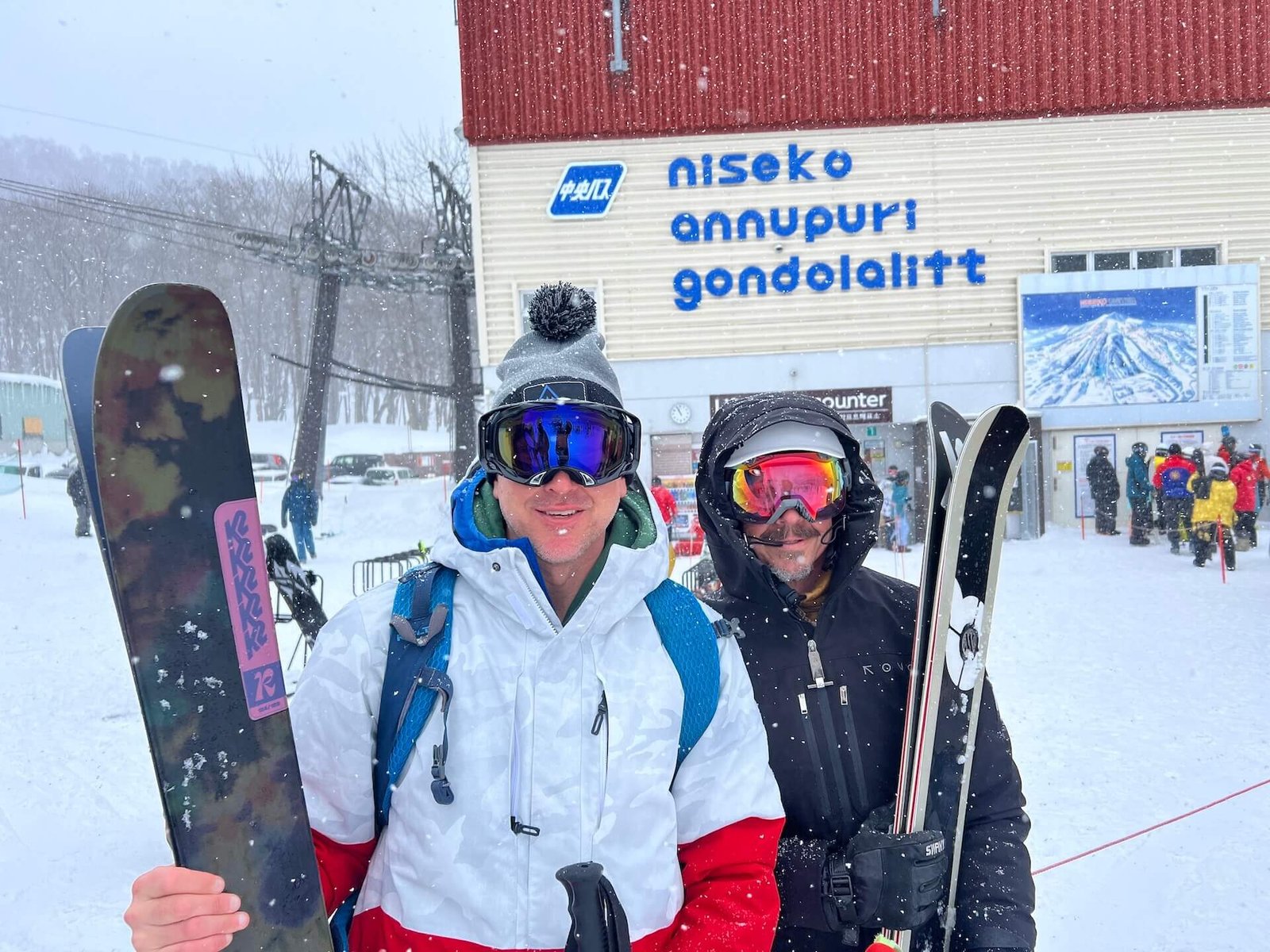
🎿 How I Started Narrowing Down the Options
I didn’t use a formal checklist for this search, but I knew what I wasn’t looking for. I didn’t want to fly across Asia for terrain that felt like skiing in Korea, and that quietly took the more polished resorts off the table. I wanted something with a little more edge, a place where the terrain was big and the experience wasn’t predictable.
That pushed me toward destinations that still feel a bit raw. Places where the skiing is serious, the culture is unfamiliar, and you walk away with stories instead of just stats. I’ve always been comfortable traveling in spots most people overlook, so digging into Kashmir, Kazakhstan, Kyrgyzstan, and western China felt like a natural next step.
I’ve also been building this blog into something more useful for other skiers and trekkers looking beyond the usual routes. As I researched these destinations, I started thinking more seriously about offering personalized trip planning across Asia, which I’m experimenting with now.
👉 Check out my free travel planning program here
🇮🇳 Indian Kashmir’s Gulmarg: Risk Meets Reward
Not long after last winter’s trip to Hokkaido, I found myself thinking ahead to 2026. As a university English teacher in South Korea, I’m lucky to get two long paid vacations each year, summer and winter, although I’m still working within the limits of an English teacher’s salary.
With a milestone birthday coming up and a growing urge to avoid the Japow-chasing crowd (for all the reasons I’ve already covered), I started looking for ski destinations in Asia that were still a little under the radar and within reach of my budget.
Japan had delivered again. But something compelled me to get a bit more creative while brainstorming ideas for winter 2026.
My first Google search began with: “Can you ski in Kashmir?”
That question led me straight to Gulmarg, a high-altitude ski zone in Indian-administered Kashmir known for its massive vertical, deep snow, and full-on adventure feel. After looking through a few tour operators, I kept coming back to Gulmarg Powder Guides.
A lot of guiding outfits in the region seem to be run by expats, but GPG felt different. It’s a locally rooted operation led by Billa Majeed Bakshi, and their guiding team blends experienced international guides with strong local talent. That mattered to me. I wanted to support the local economy without giving up safety or experience.
Their package also lined up with exactly what I needed: hotel options that fit my budget, airport pickup, all lift tickets and transfers, avalanche gear and instruction, and six days of guided backcountry.
When Billa later told me I could add heli drops for about 200 dollars a run, depending on conditions, it sealed the deal. Gulmarg is wild terrain, and having a team that knows the mountain inside and out made a huge difference.
But it was the ten-minute Salomon TV segment on their site that really hooked me in the early stages. The terrain, the snow, the atmosphere, all of it hit exactly what I was looking for.
If you can watch that video and not start mentally packing your ski bag, we probably don’t approach skiing (or life) the same way.
🎥 Watch: Salomon TV’s Dream Trip to Kashmir with Gulmarg Powder Guides
⚠️ And Then the Gulmarg Plan Suddenly Got Complicated
For a while, Gulmarg was the plan. I even had a few Colorado friends tentatively lined up to join. Then the tragic April 2025 attack happened in Pahalgam, only a few hours away.
What had felt like an edgy but reasonable choice suddenly became a much harder sell. My would-be travel partners backed out right away. I didn’t blame them, and I hit pause too. I wasn’t ready to cross Gulmarg off the list, but I needed to see how things unfolded.
Here’s the thing. I’m not reckless, and I’m not chasing danger for the story. I just don’t believe in letting fear make every decision for me. I visited Sri Lanka in 2017 and had an incredible experience. Two years later, a major attack hit the country. Bad things happen everywhere.
Statistically speaking, the odds of encountering violence in a major U.S. city are higher than what most travelers face in Kashmir, although trying to explain that to my parents is a losing battle.
That said, I wasn’t ignoring the situation. I stayed in touch with Billa and followed the news closely. My thinking at the time was simple. If things stayed quiet through the fall, Gulmarg would stay on the table and probably climb back to the top of the list.
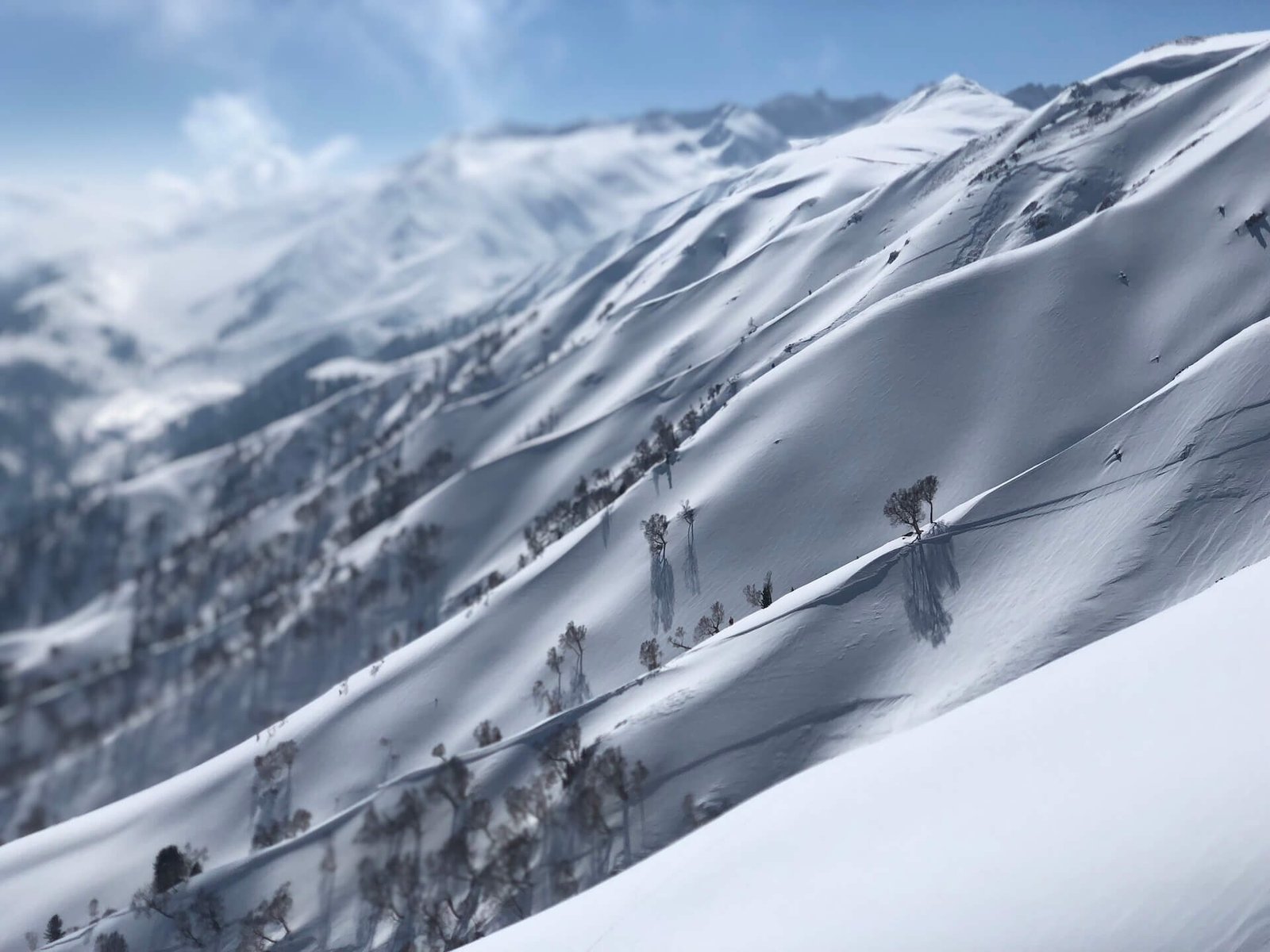
Back then, Gulmarg remained a strong maybe. It was the first place that lit the fire for this entire search and shaped what I hoped the trip could become. Once things stabilized later in the year, I ended up returning to the plan that had grabbed me from the start and committed to skiing Gulmarg in winter 2026.
👉 For the deeper dive into how I made that final decision, you can read my full Gulmarg 2026 post here.
🇰🇿 Shymbulak, Kazakhstan – Chic Powder Near Almaty
With Gulmarg on hold, I kept digging for ski destinations in Asia that sit a little outside the usual playbook, and Shymbulak in Kazakhstan kept rising to the surface.
On paper, it checked a lot of the right boxes. The resort sits just outside Almaty, Kazakhstan’s largest city, which makes logistics surprisingly easy. You can land, grab a cab, and be at the base in under an hour. That felt like a win right away.
The Trans-Ili Alatau Mountains, part of the northern Tian Shan range, looked legit too. Towering peaks, dry continental snow, and a modern lift system. Not bad for a place I hadn’t even considered a few weeks earlier.
Then there was the price. Compared to Japan or Europe, Shymbulak comes off as very affordable, and slopeside lodging seems reasonably priced. It looked like a high-value destination that still flies under the radar for most North American skiers.
The deeper I dug, though, the more questions surfaced. The surrounding terrain looks big and beautiful, but the resort itself seems relatively compact. Many of the runs are groomed, and I couldn’t get a clear sense of how much off-piste or sidecountry is realistically accessible without a guide or a touring setup.
So is it an underrated gem, or just pretty decent?
I tried to track down answers, including whether guided backcountry options might open up more interesting terrain. It looks like there are possibilities, although the information online is scattered. While I was digging into that, something else pulled me in even harder: Kyrgyzstan.
We’ll get into that next. From where I stand now, Shymbulak seems like a great one- or two-day destination, a scenic and affordable stopover that could pair well with a longer trip across the border.
📷 Watch: Destination – Shymbulak, Kazakhstan by AnewZ
🇰🇬 Kyrgyzstan – Backcountry Soul in Jyrgalan & Karakol
As I dug deeper into lesser-known ski options for 2026, my search crossed the border from Kazakhstan into Kyrgyzstan, a country I hadn’t seriously considered before going down this particular rabbit hole.
Truth be told, I didn’t know much about skiing there. I probably couldn’t have pointed to it on a map, and spelling it took a few attempts. But the more I looked, the more intrigued I became, and my inner powderhound started paying attention.
Most of the promising info pointed toward Jyrgalan, a remote village tucked into the Terskey Alatau range of the Tian Shan Mountains. There isn’t a huge amount of content out there, but I did come across a 2024 SKI Magazine piece calling the region “bucket list-worthy,” which told me it’s starting to appear on a few radars.
Karakol is home to Kyrgyzstan’s most established ski resort, but it was Jyrgalan’s raw, backcountry feel that pulled me in. It looked rugged, low-key, and unpolished, with just enough infrastructure to make a trip realistic.
One company in particular stood out: Ryce Travel. They offer several ski trips across Kyrgyzstan, but their cat-skiing tour around Jyrgalan was the real draw for me. The terrain ranges from about 2,200 to 3,400 meters and includes wide-open bowls, long pitches, and the kind of remoteness that practically guarantees untracked snow. From everything I’ve seen, they have solid guides, solid snowcats, and solid avy protocols.
🎥 Watch: CAT SKI KYRGYZSTAN – JYRGALAN (Ryce Travel)
I got in touch with Ryce, and they were great about answering questions and walking through logistics. Their full eight-day cat-ski package looks incredible, although it comes at a higher cost than the Gulmarg Powder Guides package I eventually settled on.
The Ryce Travel tour includes:
- 8 days Cat Ski Kyrgyzstan
- Full board (excluding flights)
- Hot springs and ice-cold river plunges
- 5 days of cat skiing
- Time in both Bishkek and Jyrgalan
- Powder, powder, powder

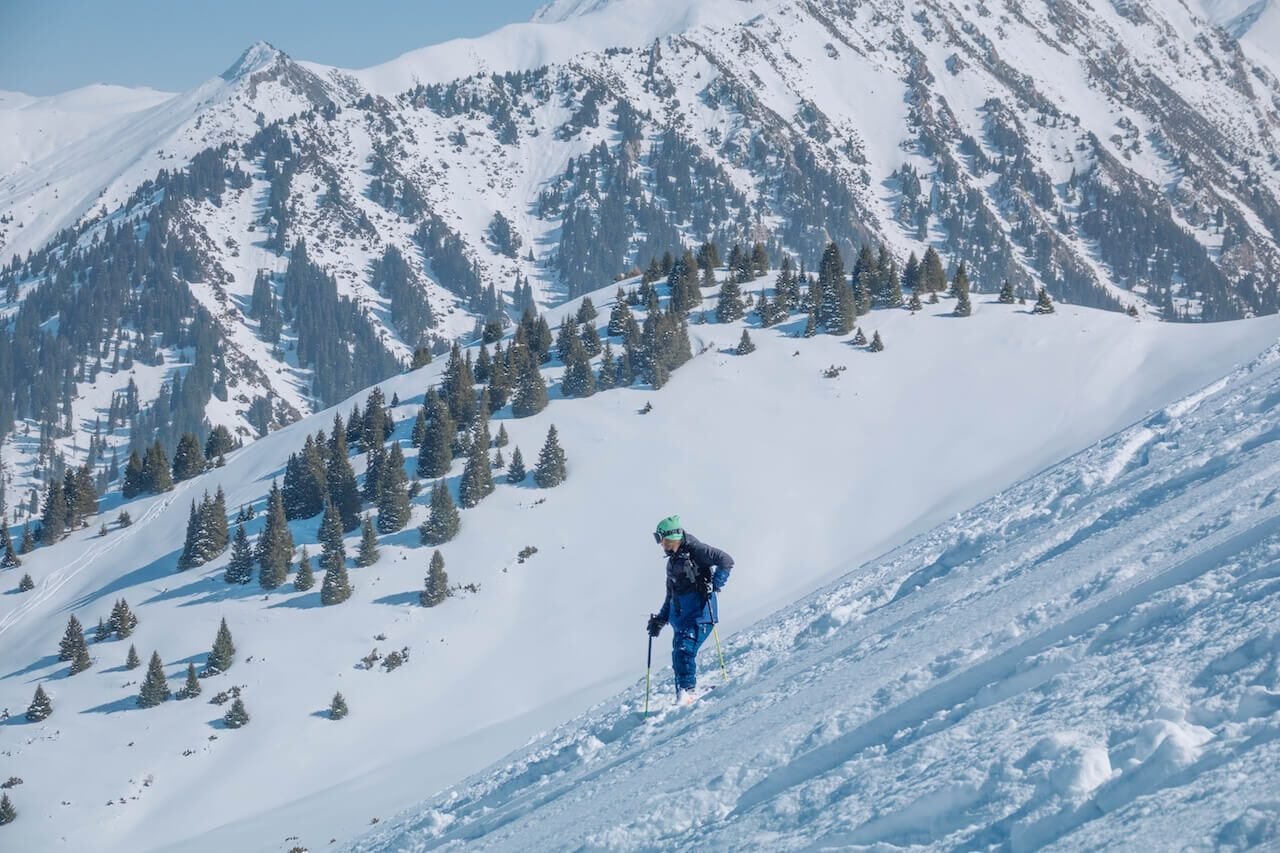
I also explored more flexible and budget-friendly options, especially in case the full Ryce package didn’t fit my timing or budget. One alternative was Visit Karakol, which offers ski touring trips in both the Karakol and Jyrgalan regions. They don’t list exact prices online, but the setup suggests a more DIY, à-la-carte approach with single-day tours, gear rentals, and guide-only arrangements.
There are tradeoffs, of course. You have to piece your own itinerary together, and renting touring gear isn’t cheap. I also don’t currently own any touring equipment, which makes the all-inclusive nature of Ryce Travel’s trip feel like a more realistic first step for backcountry skiing in Kyrgyzstan.
Even though I ultimately chose Gulmarg for winter 2026 because it aligns better with my lift-accessed backcountry style, Jyrgalan hasn’t slipped off my radar at all.
I’m already toying with the idea of a summer 2026 reconnaissance trip, using Jyrgalan as a base for possible trekking, horse tours, mountain biking, or even a few nights in traditional yurts. Renting a car and linking it with time in Kazakhstan has also crossed my mind, although that would require a lot more planning before I commit.
For now, I’m staying focused on winter 2026. But Kyrgyzstan is still firmly on the horizon.
🇨🇳 China – Jikepulin, Hemu & the Allure of the Unknown
Living in South Korea, I’ve long known that China has some well-developed ski resorts, especially places like Chongli (home to several 2022 Olympic venues), Yabuli in Heilongjiang, and Wanda Changbaishan near the North Korean border.
These areas offer wide groomers, solid infrastructure, and a ski experience that feels similar to Korea. They are fun, accessible, and easy to navigate, although not exactly the kind of terrain that leaves a mark.
For this trip, I was chasing something wilder. That is what pushed Gulmarg and Kyrgyzstan to the top of my list. But while digging into Ryce Travel’s Kyrgyzstan itineraries, I stumbled onto something unexpected: a “Ski Adventure China” trip. It was the first time I had heard the names Jikepulin and Hemu.
These zones sit in China’s remote northwest near the Altai Mountains, close to Mongolia, Russia, and Kazakhstan. From what I have read, they feel nothing like the polished mega-resorts in the east. The snowpack is Siberian-fed, the terrain looks isolated, and the whole region seems to be in the early days of becoming a true freeride frontier.
Ryce describes the trip as a mix of powder skiing and cultural immersion, with yurts, village guesthouses, and long stretches of backroad travel. Budget and timing make it a tough fit for this winter, but it is firmly on my radar.
Of course, China’s sheer size and visa logistics add a layer of complexity that the other destinations don’t. Still, if Hemu and Jikepulin really are China’s answer to Japow before Japow took off, I would love to get there before the rest of the world catches on.
For now, it sits in the long-term wildcard category, but one I’m keeping an eye on.
💸 Cost Breakdown by Destination
I haven’t gone deep on pricing in this post. The tours I’ve mentioned are linked, and since I’m not affiliated with any of them, I’ll leave the sales language to the pros.
That said, if you’re trying to get a rough sense of which places offer the most value, here’s where each destination lands based on my research so far. The dollar signs are relative.
Even the cheapest options will still run several thousand dollars once you factor in flights, guides, lodging, food, and gear.
🇮🇳 Gulmarg, India – $
One of the best values for big-mountain skiing anywhere. Lodging is affordable, guided packages like Gulmarg Powder Guides cost far less than comparable experiences in Japan or Europe, and daily expenses in Kashmir stay low once you arrive. The relative value was a major factor in my final decision. Even with a few risks tied to travel in the region, the combination of terrain, culture, and price made Gulmarg hard to walk away from.
Another selling point was the option to add heli-skiing through Kashmir Heliski. Billa told me I can decide on the fly if I want to take a lap or two, at prices that are extremely competitive compared to most heli operations worldwide. I won’t claim it is the cheapest heli-skiing on the planet, but it is certainly among the more affordable ways to access big vertical by helicopter. For a long-haul trip, Gulmarg offers an impressive amount of skiing for the money.
🇰🇿 Shymbulak, Kazakhstan – $$
Lift tickets, food, and lodging are all reasonable by international standards, and being close to Almaty keeps logistics simple. The resort is still a resort, though, and the terrain may feel limited if you are chasing backcountry. Getting there with ski gear adds cost too. As a stand-alone trip it might feel mid-range, although pairing it with a longer Kyrgyzstan itinerary starts to make more sense.
🇰🇬 Kyrgyzstan (Jyrgalan/Karakol) – $$
Ryce Travel’s cat-ski program is not cheap, but compared to heli-skiing or backcountry lodges in Japan, it is a fair price for what you get. Going the DIY route with Visit Karakol can bring costs down, although you trade simplicity for more planning, gear rentals, and avalanche prep. If you are willing to put in the time, Kyrgyzstan can offer serious value.
🇨🇳 China (Jikepulin/Hemu) – $$$
This part of China still feels like the Wild West of skiing. The tours are not outrageous on paper, but the visa process, long travel days, and limited information all add friction. If you are already in China, it is far more approachable. Coming from Korea or the United States? It slides into the expensive and unpredictable category.
⛷️ How These Asia Ski Spots Stack Up
After weeks of digging into all four destinations, a few patterns started to emerge. This table gives a straightforward look at how things compare in terms of snow, terrain, cost, safety, and overall logistics.
| Destination | Snow | Terrain | Cost | Safety | Access |
|---|---|---|---|---|---|
| 🇮🇳 Gulmarg, India | 🔥🔥🔥 | Steep / Lift | $ | ⚠️ | Medium |
| 🇰🇿 Shymbulak, Kazakhstan | 🔥🔥 | Lift / Tree | $$ | ✅ | Easy |
| 🇰🇬 Kyrgyzstan (Jyrgalan / Karakol) | 🔥🔥🔥 | Cat / Tour | $$ | ✅ | Hard |
| 🇨🇳 China (Jikepulin / Hemu) | 🔥🔥❓ | Groomers +? | $$$ | ✅ / ❓ | Hard |
If you want a clearer sense of why certain destinations rose to the top while others stayed in the maybe column, the next section walks through the factors that mattered most to me while narrowing down this search.
🏁 What I Ended Up Choosing for 2026
After further research, China fell off the table for this winter. Hemu and Jikepulin are still on my radar as long-term wildcards, and I’m curious to see how they evolve, but they’re not realistic for this trip.
Shymbulak is still something I’d like to see firsthand, although more as a one or two day add-on if a future trip takes me through Almaty. It remains interesting, but for this round it slipped into the “nice to have” category.
That left the two destinations that shaped most of my research: Kyrgyzstan and Gulmarg.
Both checked the boxes I was chasing. Big terrain, cultural depth, the feeling of skiing somewhere that still surprises people. Kyrgyzstan, especially around Jyrgalan, has a lot going for it. The cat-skiing looks fantastic, and the backcountry touring scene is clearly growing. It also feels like the kind of place more travelers could picture themselves visiting in the near future, which matters as I continue to build the travel-planning side of this site.
In the end, though, Gulmarg fit my skiing style better. I lean toward lift-accessed backcountry rather than full touring days, and the combination of Gulmarg’s vertical, snow quality, and guided structure lined up with what I want from a big winter trip. The value played a real role too. Kashmir offers serious terrain without the eye-watering price tag you see in Japan or Europe.
The logistics came together as well. With my wife working for Cathay Pacific, I can likely get to India at a reasonable rate, and Gulmarg Powder Guides make the Srinagar to mountain transition straightforward. The option to add heli laps at one of the more affordable rates anywhere was another plus.
Of course, none of this meant ignoring the region’s volatility. I paid close attention to what was happening in Kashmir, stayed in touch with Billa, and made sure I understood the risks. I’ve traveled in places that were going through tense stretches before, and I never take that lightly. In this case, I waited and watched until things stabilized enough to feel comfortable moving forward.
So that’s where I landed. Gulmarg is the call for winter 2026.
👉 For the full breakdown of how I made the final decision, you can read my dedicated Gulmarg 2026 trip plan here →
📩 If you’ve skied in Gulmarg or Kyrgyzstan, or have insights to share, contact me. I’d genuinely love to hear them.
👉 And if you are planning your own off-the-beaten-path ski or trekking trip in Asia, I’m currently offering free, personalized travel planning help. You can learn more here →
❓ Skiing in Asia FAQs
Where can you ski in Asia?
Asia offers a surprisingly diverse range of ski destinations. Japan is the best-known, famous for deep powder and consistent snowfall — especially on Hokkaido. South Korea has a compact but well-developed resort scene near Seoul. China’s ski infrastructure has grown rapidly post-2022 Olympics. Meanwhile, Central Asia (Kazakhstan, Kyrgyzstan, and India’s Kashmir region) offers remote, big-mountain terrain for those seeking adventure. Whether you’re into luxe resorts or off-grid powder, Asia has something for nearly every type of skier.
Is Gulmarg, India safe for skiers right now?
That depends. Gulmarg sits in Indian-administered Kashmir, a region with a long history of political tension. Outfitters like Gulmarg Powder Guides are experienced and well-reviewed, but incidents like the 2025 Pahalgam attack have raised real concerns. Many skiers still go — but it’s a personal call. Check travel advisories, follow local updates, and gauge your own comfort level before committing.
What’s skiing in Kyrgyzstan like?
It’s raw, remote, and quietly amazing. Places like Jyrgalan and Karakol offer cat-skiing and touring terrain that feels like a throwback to skiing’s soul — big lines, no lift lines, and a strong DIY vibe. Expect local guides, yurts, and cultural immersion alongside the powder. It’s not polished, but that’s the point.
How does Shymbulak in Kazakhstan compare to other spots?
Shymbulak is lift-accessible, modern, and just outside Almaty — making it one of the easiest ski areas to reach in Central Asia. The scenery’s gorgeous, and the infrastructure is solid. That said, it may feel limited for advanced skiers unless you link it with backcountry or pair it with Kyrgyzstan. It’s a great intro to the region.
Can you ski in China?
Yes — and the scene is expanding fast. Popular resorts like Yabuli, Changbaishan, and Thaiwoo boast modern facilities, with many catering to beginner and intermediate riders. But the real intrigue is farther west. Remote regions like Hemu and Altay offer deep snow, cultural immersion, and emerging backcountry terrain — if you’re up for the logistics.
Is Japow still worth it?
Definitely — the snow’s still world-class. But it’s no longer the secret it once was. Resorts are busier, dining now requires reservations, and post-COVID tourism has spiked. Still, if you prep ahead and manage expectations, Japan continues to deliver one of the best ski trips on Earth.
🛡️ Don’t Forget Travel Insurance for Ski Trips Like These
Whether you’re planning to ski deep powder in Gulmarg, India, explore backcountry trails in Jyrgalan, Kyrgyzstan, or hit the slopes at Shymbulak in Kazakhstan, one thing I never skip is solid travel insurance.
For trips like this, I’ll be going with SafetyWing — an affordable option for adventure travelers that covers unexpected medical issues, trip interruption, lost gear, and more.
They offer flexible plans (even for shorter trips), and the coverage is valid in remote regions where things can get…unpredictable.
👉 Read the details and get a quote here
